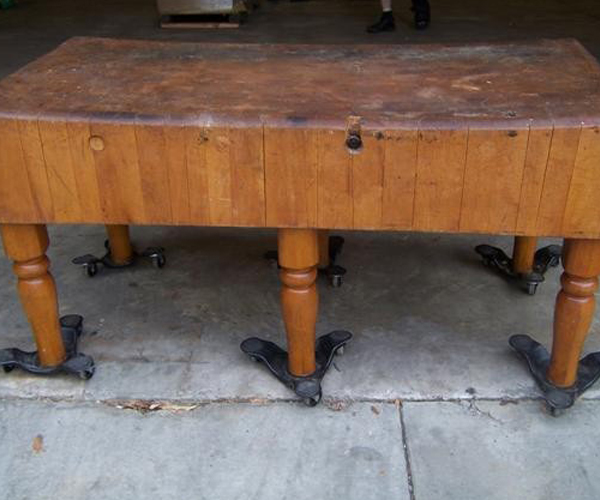
For a true butcher's chopping block, the board should be made with the end grain of the wood, which means the ends of the wood fiber are exposed and give the board a checkerboard appearance. Wood grain refers to the way the wood fibers are oriented in a block. If you know you’ll need to move it regularly, look for a model that features inner handles for carrying convenience. Handlesīecause a butcher's chopping block can be fairly heavy, moving it around your kitchen may be difficult. To make sure that a butcher's chopping block lasts as long as possible, consider a two-inch or thicker model, as the thicker wood is less likely to warp over time. Thinner blocks are best reserved for chopping fruits and vegetables.

In order for a board to be a true butcher's chopping block, it must be at least one-and-a-half inches thick. The groove catches the juices that pour out when you cut your meat, so you don’t make a mess on your countertop.īestReviews Cooking and Baking Expert Thickness Some butcher's chopping blocks feature drip or juice grooves that run around the edge of the block. However, if you routinely carve or chop larger cuts of meat, you may want a larger size, such as 18 x 12 inches or 20 x 15 inches.įor maximum surface space, you can even find butcher's chopping blocks that are 18 x 18 inches. Sizeīutcher's chopping blocks come in a variety of sizes, but for the most functional work surface, choose a model that’s no smaller than 12 x 12 inches. Some butcher's chopping blocks contain a blend of two or more types of wood, creating an even more decorative appearance with a striped or checkerboard pattern. Hickory: One of the strongest wood options holds up to wear and tear very well.īamboo: A sturdy, durable wood that’s eco-friendly because it renews very quickly. Teak: A tropical hardwood that’s highly moisture-resistant and offers a very attractive appearance. Maple: A very durable hardwood that’s more budget-friendly than other options.Ĭherry: A very strong hardwood that’s fairly pricey but offers a very attractive red color. They can give your kitchen a warm, vintage look that complements a wide range of décor styles.īestReviews Cooking and Baking Expert Feature considerations Wood typeĪ butcher's chopping block can be made of nearly any type of wood, but some popular choices include the following. Large Size: A butcher's chopping block offers a large work surface that’s ideal for kneading and rolling out dough, as well as performing other kitchen tasks.Įnvironmentally Friendly: If you’re looking for an eco-friendly cutting surface for your kitchen, a butcher's chopping block is an excellent choice because the boards are often made from reclaimed wood instead of new materials.Īttractive Appearance: While function is obviously the most important feature of any kitchen tool, it’s hard to ignore the attractive look that a butcher's chopping block offers. Versatility: While it’s thicker and heavier, a butcher's chopping block can double as a regular cutting board, so you can cut fruits, veggies, herbs, and other ingredients on it – along with your meat.
#Butcher blocks meat crack#
Butcher's chopping block benefitsĭurable: Because a butcher's chopping block is thicker than a regular cutting board, it’s more durable and won’t crack as easily. Butcher's chopping blocks also offer a larger cutting surface, which is helpful if you’re cutting a whole chicken or another large cut of meat. A butcher's chopping block is thicker and heavier, so it doesn’t move around when you exert the force necessary to cut through meat.

With meat, on the other hand, you may have to debone, fillet, quarter, and chop thicker, tougher ingredients – and a basic cutting board usually isn’t up to the job. A thin, lightweight cutting board is an ideal work surface for this type of light cutting. When you’re cutting fruits, vegetables, herbs, and other small ingredients, you’re usually slicing, dicing, chopping, and julienning the items, which typically doesn’t require a great deal of force. The fact is that cutting boards and butcher's chopping blocks aren’t exactly the same thing, and if you frequently cut meat at home, a butcher's block may prove to be a key addition to your kitchen. If you already have a cutting board in your kitchen, you might be wondering if a butcher's chopping block is really necessary.
.jpg)
Butcher blocks have been used in butcher shops for centuries, which is how they got their name.


 0 kommentar(er)
0 kommentar(er)
